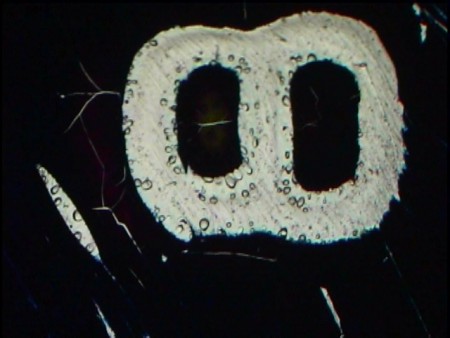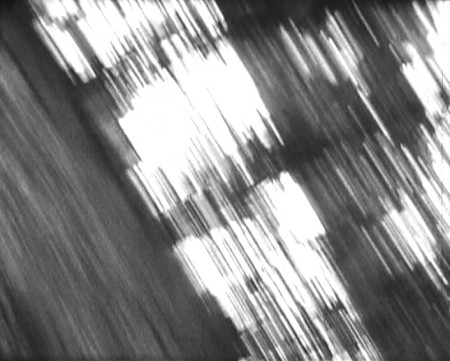
Could you tell us a little bit about the program you’ll be screening for Conversations at the Edge this fall? How did you become interested in this subject matter?
Ghost Anthology is part of a series of programs about Argentine experimental cinema that I’ve been working on for a couple of years. In a way it’s a supplement to my own research in that field which started as soon as I discovered the films of Claudio Caldini, Narcisa Hirsch, Jorge Honik, and some of the other filmmakers from that period. I was shocked by the radicalism of their powerful images, and even more shocked to find out that there was virtually nothing written about all those works which to me constituted some of the most lucid ideas of film, as an art form, ever to be produced in Argentina.
So, the idea behind this program is to present a curated perspective of this history, whose artistic impact has yet to be discussed or addressed at length not only nationally but especially outside of Argentina. To (try to) fill a void. In this sense, each program is different and subjective, as I intend to escape the creation of a canon, even when there are obvious key figures and films in this tradition. For this program, the line-up of films focuses on the most vibrant period for avant-garde film in Argentina, from the 1970s to the early 1980s, and its relation to a younger generation. Also, the idea behind these programs is to present work in their best possible form, which in this case means that all the films will be screened from their original camera materials.
Ghost Anthology is composed entirely of work on Super 8mm — could you tell us more about the importance of this format for your makers? Why do you think it has continued to appeal to younger generations of Argentine filmmakers?
In an article written in 1978, Claudio Caldini stated that, “Super 8 imposes other relationships with cinema, from conception to screening. … Which ones? Those that the artists imagine and make happen. They are the ones who decide what kind of film to make, their audiences, and how to reach them. A self-determination that many professionals would bless. Super 8 demands the rediscovery of the trade.” I think this is true, and perhaps the main reason why so many filmmakers in Argentina (at least all the ones included in the program) have chosen Super 8 as their principal medium of work. Besides being less expensive than 16mm or 35mm (which I won’t deny it was/is an important factor here), I think Super 8 has been always a more “accessible” aesthetic tool. With its reduced size and simplified functions, filmmaking becomes a truly personal (individual) and infinite process. I think that infinite quality that leads to a rediscovery of the trade is very well represented in all of these challenging films.

What artists are you following right now?
I’m interested in many artists, especially those working in the field of film (as in photochemical imagery), but I would say I try to keep up with the work of Luther Price, Frank Biesendorfer, and Helga Fanderl, three artists that are very prolific and show mostly their originals (also projected by themselves)—a bad combination for someone who likes their stuff and doesn’t travel that much.
Besides them, and other international figures, I closely follow the work of many of my friends and colleagues in Argentina.
Tell us a bit about your artistic practice. What are you working on now?
In addition to curating and writing (and a little teaching now and then) about experimental film, I also make films. Which sometimes can be kind of hard, in terms of detaching myself from all the work that I see and think about from a critical point of view and focusing on my own work. It’s a mixed feeling, I guess. Because I ultimately think that it’s always better to keep yourself informed, to know what’s out there, than to be isolated. But anyway, right now I’m finishing a series of films about nature that are being shot on Super 8 and will be blown-up to 16mm at the Liaison of Independent Filmmakers of Toronto (LIFT), as part of a great residency program they offer. The films propose an approach to nature from a very structural (geometrical) perspective using in-camera superimpositions as the main resource (a procedure I’m very interested in).
I’m also editing and translating an anthology of Stan Brakhage’s texts and essays which will be published next year. I’m very excited about this book, have been working on it for years, but that’s another story …
Pablo Marín will be presenting his program, Ghost Anthology, at CATE on Thursday, October 17 at 6PM